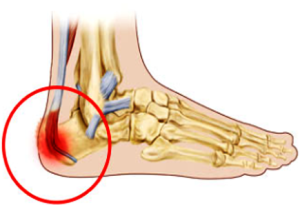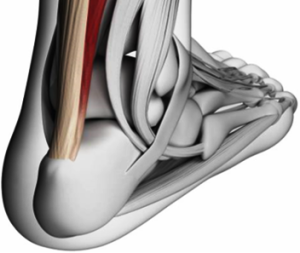Sever’s disease
Sever’s disease (Calcaneal Apophysitis)
Sever’s disease (calcaneal apophysitis) is the most common cause of heel pain in children. Sever’s disease is a painful inflammation in the growth plate area at the back of the calcaneus (heel bone) where the Achilles tendon attaches. It is most common in physically active children between the ages of 8 and 14 years old. Children most commonly report pain during periods of rapid growth and commonly gets misdiagnosed as ‘growing pains’.
Pain is usually felt at the back of the heel and Achilles tendon. There is often swelling on the heel, stiffness of the calf muscle in the morning and tender to touch. Additional symptoms reported by children also include;
- Heel pain during physical activity increasing after exercise.
- Running and jumping make the symptoms worse.
- In severe case children may limp and even have a tendency to tiptoe.
- Squeezing the sides of the heel bone is often painful.
Cause
Sever’s disease is primarily caused by overuse or repeated minor trauma to the heel. Tight calf muscles are a common cause in children who develop this problem. There is a strong pull from the Achilles tendon (calf muscle) causing an pain, inflammation and irritation at its attachment on the growth plate at the back of the heel.
Some risk factors associated with Sever’s disease include;
- Sporting activities that involve running and jumping more common on hard surfaces (basketball, soccer, football, netball).
- Sporting activities that involve fast explosive movements (sprinting, athletics).
- A flat foot (over pronated) creates a twisting of the Achilles tendon adding to the shear forces of the tendon pulling on the heel bone.
- Adolescent obesity.
- Exercising while wearing inappropriate shoes.
Treatment
A comprehensive podiatric assessment is recommended early to prevent the progression of symptoms and ensure appropriate treatment is undertaken. Diagnostic imaging including a X-ray and Ultrasound may be required for further diagnosis. At Sydney Foot Clinic the treatment options offered for children with Sever’s include;
- Rest – cutting back on sporting activity is essential to improve symptoms. If symptoms continue to be displayed then a complete break from sport may be needed.
- Ice and elevation.
- An exercise program to stretch the calf muscle reducing pain in the symptomatic area.
- Massaging of the calf muscles.
- Heel raises or possibly a custom orthotic insole may be needed to reduce the sheer process exerted by the Achilles tendon on the growth plate/heel bone.
- Strapping or taping of the ankle/foot.
- Avoid barefoot walking/running.
- Advice on appropriate footwear – running shoes, football/soccer boots.


